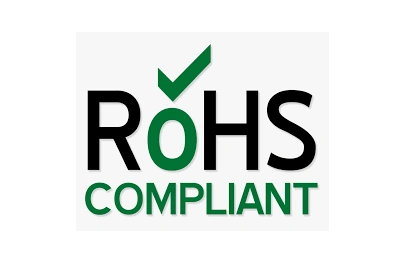Restriction of Hazardous Substances (RoHS)
The Reduction of Hazardous Substances (RoHS) regulations set limits for the following substances:
- Lead
- Mercury
- Cadmium
- Hexavalent Chromium
- Polybrominated Biphenyls (PBB)
- Polybrominated Diphenyl Ethers (PBDE)
To certify to the above compliances, these substances must not be intentionally added to the product AND cannot exceed the following maximum allowable levels as a trace substance:
0.1% (1,000 ppm) for: Lead*, Mercury, Hexavalent Chromium, PBB and PBDE
0.01% (100 ppm) for: Cadmium
Lead as an alloying element in copper alloys is allowed up to 4.0% (40,000 ppm); in steel up to 0.35% (3,500 ppm) is allowed; in aluminum alloys up to 0.40% (4,000 ppm) is allowed.
Compliance Assurance System
Restricted Substance Controls (RSC) defines the actions and mechanisms you can take to prevent restricted substances from inclusion in your products. To ensure RSC are effective, the procedures should be integrated into an overall Compliance Assurance System (CAS).
EU Enforcement authorities and OEM customers are requesting documentation of producer’s RoHS compliance procedures to demonstrate that appropriate systems are in place to ensure on-going compliance.
Compliance procedures should be integrated into your quality management system or environmental management system if one exists.
RoHS Certifiation helps you in developing your ‘Compliance Assurance System’
Examples of product components containing restricted substances
RoHS restricted substances have been used in a broad array of consumer electronics products. Examples of leaded components include:
- paints and pigments
- PVC (vinyl) cables as a stabilizer (e.g., power cords, USB cables)
- solders
- printed circuit board finishes, leads, internal and external interconnects
- glass in television and photographic products (e.g., CRT television screens and camera lenses)
- metal parts
- lamps and bulbs
- batteries
Cadmium is found in many of the above components, examples include plastic pigmentation, nickel-cadmium (NiCd) batteries and CdS photocells (used in night lights). Mercury is used in lighting applications and automotive switches, examples include fluorescent lamps (used in laptops for backlighting) and mercury tilt switches (these are rarely used nowadays). Hexavalent chromium is used for metal finishes to prevent corrosion. Polybrominated biphenyls and diphenyl Ethers/Oxides are used primarily as flame retardants.




